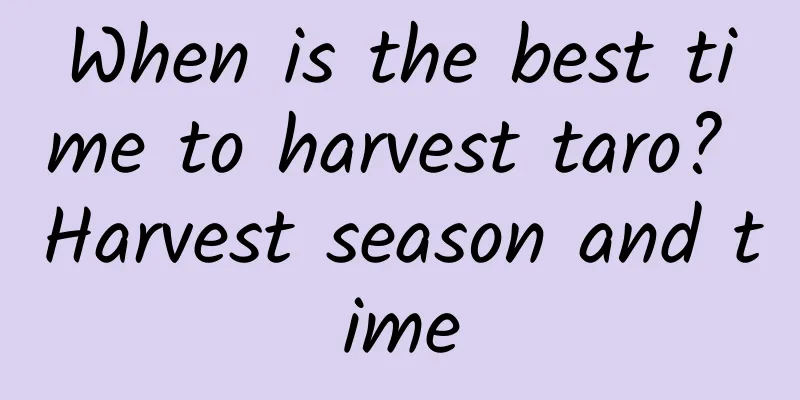The best sowing time for winter wheat (how to determine the appropriate sowing period for wheat)

|
Don't miss the farming season! It's time to plant wheat again! It may be because global warming has delayed the date of temperature drop, making the agricultural proverb in the middle and lower reaches of the Yellow River "White Dew comes early, Cold Dew comes late, and it is the right time to plant wheat at the Autumnal Equinox" increasingly inaccurate. It seems that it should be changed to "Cold Dew is the right time to plant wheat." How should various regions determine the appropriate sowing period for winter wheat?Cold Dew is the 17th solar term among the 24 solar terms. It usually falls on October 7th to 9th of the Gregorian calendar every year, and mostly on October 8th. Nowadays, October 1st to 15th every year is the suitable sowing period for wheat in most winter wheat planting areas in my country. So it is basically "the right time to plant wheat in Cold Dew". What is the optimum temperature for sowing winter wheat?As we all know, 15℃~20℃ is the most suitable temperature for wheat seeds to germinate and sprout, while 16℃~20℃ is the most suitable temperature range for wheat root growth. Temperatures that are too low or too high will affect normal germination, especially temperatures below 2°C or above 30°C will seriously inhibit germination and root development. Of course, different wheat varieties have different temperature requirements for sowing. Generally speaking, the temperature requirements for sowing winter varieties are 16℃~18℃ and 17℃~19℃ at 5cm. Semi-winter varieties are more suitable for sowing when the temperature is 14℃~16℃ and the 5cm ground temperature is 15℃~17℃. Spring varieties are suitable for sowing when the temperature is 12℃~14℃ and the 5cm ground temperature is 13℃~15℃. In most winter wheat areas, the suitable sowing temperature for winter wheat is in mid-to-early October each year, so it is more appropriate to sow around the Cold Dew solar term. |
<<: How to grow sunflowers for high yields (sunflower field management techniques and planting tips)
Recommend
What is the reason for the rot spots on the leaves of Tiger Pilan
1. Too much watering Reason: The root system of S...
Cultivation methods and precautions of water ferns
Best places to grow water ferns Other ferns gener...
How often should I water the flowers?
How often should I water the flowers? Anthurium g...
How to fertilize gardenia and what fertilizer to use
1. Fertilization time First of all, when planting...
How many years does passion fruit bear fruit?
Introduction to passion fruit planting Passion fr...
The language and legend of forget-me-not
1. Legend According to legend, a knight and his l...
Does aloe vera bloom? What are the characteristics of aloe vera?
1. Whether it blooms Aloe vera can bloom, but it ...
How to grow orchids
1. Suitable potting soil Orchids have no requirem...
Is the Chinese toon tree a shade-loving or sun-loving plant?
Does the Chinese toon tree prefer shade or sun? T...
Diseases and control methods of Areca palm
Areca palm leaf blight symptom Areca palm leaf bl...
Does Agave need sunlight? Does it need pruning?
1. Do you need to bask in the sun? Its origin is ...
Before and after the New Year, go to this secret base to pick flowers and grow them without spending a penny!
The secret base for picking flowers at the flower...
How to propagate Potentilla fruticosa
Seed propagation Seed selection: This is a very i...
Is cucumber a fruit or a vegetable?
Is cucumber a fruit or a vegetable? Cucumber is a...
Time and method of cuttings of elm
Elm cutting time Elm cuttings are usually taken i...









